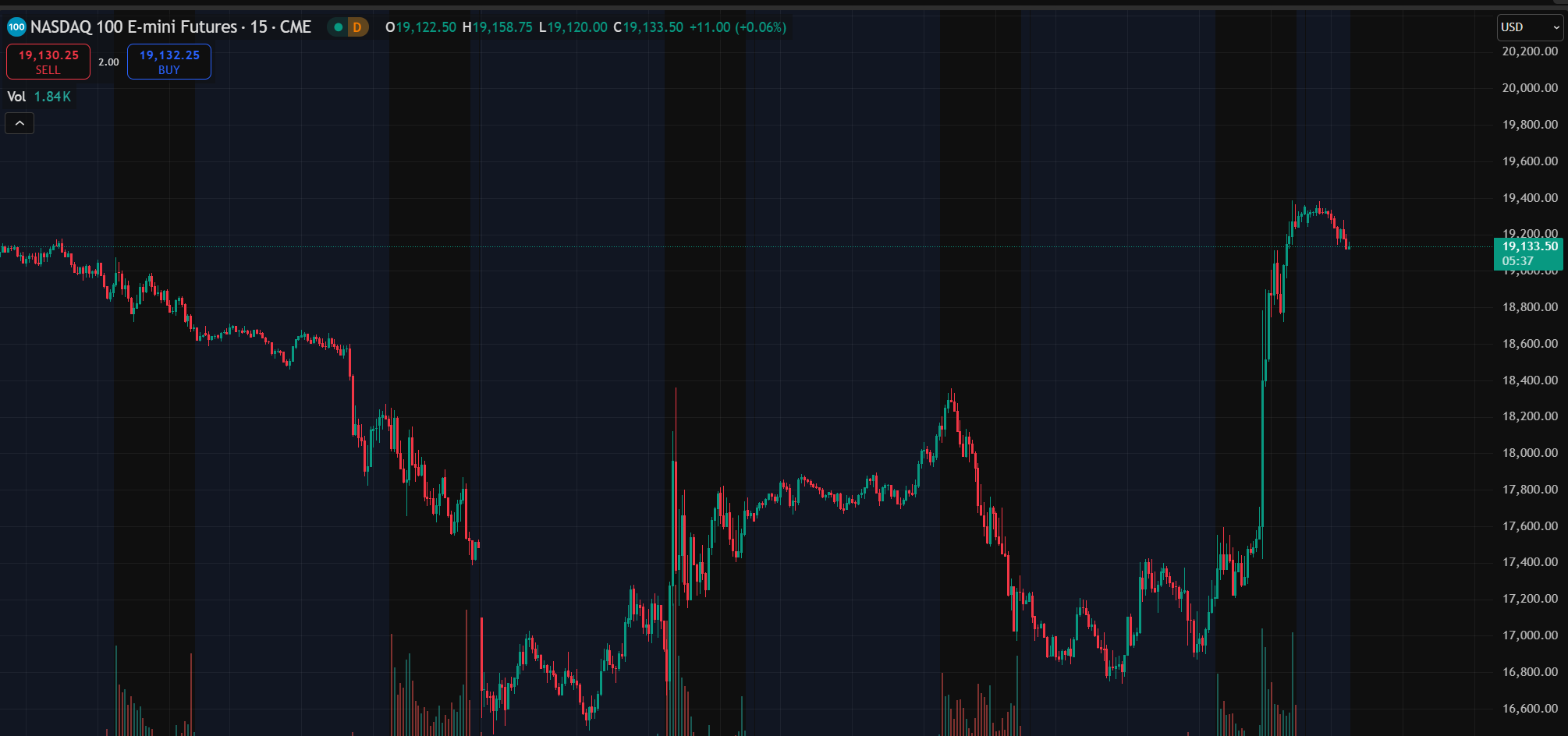Key Takeaways
- Trump Tariffs in 2025 are shaking up the U.S. stock market, causing volatility you can’t ignore.
- Historically, tariffs have led to market dips, but smart investors have found ways to adapt.
- You can protect your portfolio by diversifying and focusing on domestic stocks.
- You may want to consider changing your investment strategy entirely.
- A step-by-step recovery plan helps you regain control amidst today’s uncertainty.
Introduction
Today, watching your portfolio must feel like an unrelenting nightmare with Trump Tariffs rolling out throughout 2025, you’re probably feeling that same confusion, and maybe tempted to panic sell, unless you already have.
I too have had my eyes glued to the screen hoping for the fallout of Trump's tariffs to normalize and begin a reversal back into the upside. As you know, this is not the case and we'll likely see continued volatility over the next several months.
But, there's good news, by understanding what’s happening and taking action, you can shield your hard-earned money from the chaos, potentially minimize your fallout, and begin that slow road to recovery.

What are tariffs and the latest on Trump’s
Tariffs are levies placed on imported goods into a country. For example, before an iPhone enters the US, it is taxed based on its country of origin, in most cases, this is China. Think of them as a fee you indirectly pay when companies pass on higher costs.
They’ve been around forever, but they’re back in the spotlight with Trump Tariffs making waves in 2025 and causing huge disruption to the stock markets. Trump has applied tariffs under the guise of narrowing trade deficits between the US and other countries.
Currently, as of writing, Trump has announced a 90-day suspension on all tariffs imposed during 'Liberation Day', but has kept the 125% tariff on China as a 'punishment' for their retaliatory tariffs on US imports.
The 2025 Donald Trump tariffs update
As of April 8, 2025, Trump’s latest tariffs are live, hitting everything from a 10% baseline on all imports to a whopping 125% on Chinese goods. Canada and Mexico face 25% levies, and auto imports are getting hammered too.
It’s a bold move, aimed at boosting U.S. manufacturing, but it’s also sparking trade wars and market jitters. The S&P 500’s already down over 17% from its peak, and you’re likely thinking, when will all this madness end, well, no one can be certain.
History of tariffs on the stock market
Early tariff turbulence
Tariffs aren’t new, and their impact on stocks has a long track record. Take the Smoot-Hawley Tariff Act of 1930, raising duties on over 20,000 goods. It aimed to help American farmers but backfired, deepening the Great Depression.
The Dow Jones crashed nearly 90% from its 1929 peak as global trade collapsed. Your investments today might not face an extreme drop like in the 1920s, but there's certainly going to be major market disruption. It took the S&P 500 almost 30 years to return to its previous high after the 1929 market crash.
Trump’s first term tariffs
Fast forward to 2018–2019, when Trump Tariffs targeted China with 25% duties on steel and aluminum. The S&P 500 dropped 5% when these tariffs were announced, per Goldman Sachs, and dropped a further 7% when other countries began retaliating.

Companies like Apple (APPL) and Nike (NKE), reliant on global supply chains, saw sharp declines. Yet, the market recovered over time as investors adjusted. History shows tariffs bring short-term pain but don’t always spell long-term losses.
What’s different now?
Today’s Trump Tariffs are broader and steeper, covering more countries and goods. The economic impact feels heavier, with recession fears spiking to 40–50%, according to Goldman Sachs.
In addition, it has become very clear your portfolio’s taking a hit as uncertainty drives stock market volatility higher than we’ve seen in years.
How did investors mitigate against historical stock market crashes?
Diversification saved the day
Back in the 1930s, investors who spread their investments across bonds, gold, and domestic stocks weathered the storm better. When tariffs tanked trade-reliant companies, those with diversified portfolios avoided the worst losses. It wasn’t perfect, but it managed to see them through.
Betting on U.S.-focused firms
During Trump’s first tariffs, savvy investors pivoted to companies less exposed to imports, like utilities or healthcare giants. The Consumer Staples sector held steady while tech stumbled.
You could explore companies such as Procter & Gamble (PG), which thrived despite trade policy chaos, cushioning your returns.
Hedging with safe havens
Usually, when stocks slide, gold rallies, and bond yields drop as investors seek safety. Those who hedged didn’t just survive, they positioned themselves to buy low when markets rebounded. By transitioning to more safer assets, the recovery is slower, but it reduces risks and minimizes losses during turbulent times.
It’s a classic play you can learn from today.

What can you do today to minimize your losses
Assess your exposure
First, check how much of your portfolio leans on companies hit by Trump Tariffs, think tech giants like Apple or retailers like Walmart (WMT). If imports drive their costs up, their stocks could continue to slide.
Shift to domestic winners
Look at U.S.-based firms that don’t rely on global supply chains. Energy companies or local manufacturers could benefit from tariff-driven “America First” policies. Your money might grow safer there as trade tensions continue to rise.
Embrace portfolio diversification
Don’t put all your eggs in one basket. Spread your investment across bonds, real estate, or even cash to balance the risk. Stock market volatility’s brutal right now, but diversification can soften the blow. It’s your shield against potentially unknown swings from a single industry.
Stay calm and strategic
Panicking is the worst move. Markets dip, but they also recover. Historical crashes prove that knee-jerk selling locks in losses. You’re better off holding steady or buying undervalued stocks when the dust settles.
Change your trading strategy entirely
This may sound rather extreme, but during times of high uncertainty, investors may be inclined to change their style of investing. With the clear damage that tariffs have had on the stock market, you could explore other investing methods to grow your wealth.
Futures trading
Futures trading lets you lock in prices for assets like commodities, indices, or even currencies, months down the line, perfect when Trump Tariffs are throwing the stock market into a downward spiral. Say tariffs jack up steel costs. You could trade steel futures to profit if prices spike, incidentally benefiting from tariffs instead.
It’s less about picking individual stocks getting hammered, like some tech giants, and more about riding broader trends. With the S&P 500 down 17% since these tariffs hit in April 2025, futures trading gives you a way to sidestep that chaos and still play the market’s next move.
Sure, it’s a bit speculative, but it’s a lifeline when uncertainty’s this thick.

Options trading
What if you could limit your downside while still cashing in on this tariff-driven rollercoaster? Options trading hands you that power, giving you the right, but not the obligation, to buy or sell stocks at set prices later.
With Trump Tariffs slamming companies like Apple or Walmart in 2025, you could buy put options to profit if their stocks keep tanking, or calls if you think they’ll bounce back. It’s like a safety net.
If the market’s 17% drop keeps going, you’re covered with a call option, but if it flips, you’re not stuck. I’ve seen friends use options to hedge during wild times like these, and it’s a game-changer when you’re dodging tariff fallout.

Forex Trading
Ever notice how tariffs make currencies dance? Forex trading, swapping one country’s money for another, lets you jump into that action, and with Trump Tariffs stirring the pot in 2025, it’s a hot spot.
When the U.S. slaps a 25% tariff on Canada or 125% on China, their currencies (like the Canadian dollar or yuan) often dip as trade slows, while the U.S. dollar might strengthen. You could trade that USD/CAD pair, betting the dollar climbs as the tariffs bite away at their trade.
It’s less about stock market chaos, where the S&P’s bleeding, and more about global reactions, giving you a fresh angle to grow your wealth while tariffs wreak havoc elsewhere.

List of countries with the highest and lowest US tariffs
| Top 10 Highest | Tariff % | Top 10 Lowest Tariffs | Tariff % |
|---|---|---|---|
China Cambodia Vietnam Thailand Taiwan India South Korea Canada Japan European Union | 125 49 46 36 32 26 25 25 24 20 | Canada Mexico Australia Singapore Chile Morocco Bahrain Jordan Peru Colombia | 25 25 10 10 10 10 10 10 10 10 |
Data as of 10th April 2025 - (A 90-day postponement has taken effect, these numbers may change)
Step-by-step on how to implement a recovery investment plan for your portfolio
Step 1: Review your current holdings
Grab your latest statement and list every stock, fund, or asset. Highlight anything tied to imports or global trade, those are your tariff red flags.
Step 2: Calculate your risk level
Add up how much of your portfolio is in volatile sectors like tech or retail. If it’s over 50%, you’re likely highly exposed. Aim to bring that down to 20–30% for balance.
Step 3: Reallocate to safer assets
Move 10–20% into domestic stocks (e.g., utilities) or bonds. Check out ETFs like the iShares MSCI USA Min Vol Factor (USMV) for low-risk equity. It’s a slow shift, but it steadies your portfolio and hopefully your nerves.
Step 4: Get off the speculation coster
Start analyzing stocks based on their fundamentals and move away from market speculation. If you can uncover stocks that are entering oversold territory but show strong fundamentals, then you may want to add them to your list.
Step 5: Set up a watchlist
Track tariff-resistant stocks, think Home Depot or ExxonMobil. Use free tools like Yahoo Finance to monitor price drops. If you see a price drop, then it might be a good time to enter and hold.
Step 6: Schedule regular check-ins
Mark your calendar for a monthly review. Trump Tariffs could shift fast, and you need to adjust. Stay flexible, and strong-minded, markets often have a knack for bouncing back, but it will take time.
Conclusion
Trump Tariffs in 2025 are rattling your portfolio, no doubt about it. From their historical roots during the Great Depression to today’s global trade showdown, tariffs have a knack for shaking up the stock market.
But you’re not helpless, investors have found ways to dodge and minimize their exposure in the past, and you can too. By betting on domestic strengths, and staying cool-headed. Right now, you can do the same: assess your risks, pivot smartly, and follow a recovery plan.
A great tool you can use to gauge the markets and uncover potential opportunities is Intellectia, a powerful AI tool that analyzes, interprets, and simplifies complex market information for retail investors.
The market’s bumpy, but with the right moves, you’ll ride out this storm and maybe even come out ahead.











